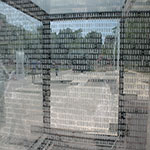Euroacademia Conferences
 Europe Inside-Out: Europe and Europeanness Exposed to Plural Observers (9th Edition) April 24 - 25, 2020
Europe Inside-Out: Europe and Europeanness Exposed to Plural Observers (9th Edition) April 24 - 25, 2020 Identities and Identifications: Politicized Uses of Collective Identities (9th Edition) June 12 - 13, 2020
Identities and Identifications: Politicized Uses of Collective Identities (9th Edition) June 12 - 13, 2020 8th Forum of Critical Studies: Asking Big Questions Again January 24 - 25, 2020
8th Forum of Critical Studies: Asking Big Questions Again January 24 - 25, 2020 Re-Inventing Eastern Europe (7th Edition) December 13 - 14, 2019
Re-Inventing Eastern Europe (7th Edition) December 13 - 14, 2019 The European Union and the Politicization of Europe (8th Edition) October 25 - 26, 2019
The European Union and the Politicization of Europe (8th Edition) October 25 - 26, 2019 Identities and Identifications: Politicized Uses of Collective Identities (8th Edition) June 28 - 29, 2019
Identities and Identifications: Politicized Uses of Collective Identities (8th Edition) June 28 - 29, 2019 The European Union and the Politicization of Europe (7th Edition) January 25 - 26, 2019
The European Union and the Politicization of Europe (7th Edition) January 25 - 26, 2019 7th Forum of Critical Studies: Asking Big Questions Again November 23 - 24, 2018
7th Forum of Critical Studies: Asking Big Questions Again November 23 - 24, 2018 Europe Inside-Out: Europe and Europeanness Exposed to Plural Observers (8th Edition) September 28 - 30, 2018
Europe Inside-Out: Europe and Europeanness Exposed to Plural Observers (8th Edition) September 28 - 30, 2018 Identities and Identifications: Politicized Uses of Collective Identities (7th Edition) June 14 - 15, 2018
Identities and Identifications: Politicized Uses of Collective Identities (7th Edition) June 14 - 15, 2018
UNPUBLIC SPACES OF EUROPE (U.S.E.) – On Places, Non-Places and Other Spaces of the European Contemporary City
-
-

-
Presentation speakers
- Miguel Silva Graça, Centro de Investigação do Território, Transportes e Ambiente – Universidade de Coimbra (CITTA-UC), Portugal
- Download presentation
Abstract:
“You will find everything sold together in the same place (…): figs, witnesses to summonses, bunches of grapes, turnips, pears, apples, givers of evidence, roses, medlars, porridge, honeycombs, chick-peas, law suites, allotment machines, irises, lamps, water-clocks, laws, indictments”.
Eubulus, IV century Greek poet (Athenaeus, Deipnosophistai 14.640 b-c)
Between the romanticized version of a Greek agora and the intense contemporary shopping centers there isn’t probably a disparity as considerable as we can imagine, since both can be easily mistaken with the ancient markets and the public squares of today. Before, as now, there is a clear separation between the production of discourse and the experience of the symbolic spaces of the city. On the other hand, it is a fact that public space is not anymore what it used to be. Following the emergence of a new urban condition, other outstanding elements — such as stadiums, thematic parks, artificial beaches, industrial showrooms or multi-purpose indoor arenas — appear nowadays as meaningful places of the contemporary metropolitan landscape, in addition to the traditional network of public spaces. Amongst them, the shopping center is not only one of the most striking elements of contemporary city, but also a “quasi”-urban component where notions such as “public” and “private” or “non-place” and “place” are challenged by the ambivalent nature of this architectural typology. And shopping centers are, in fact, more than just mere sites for consumption. In the scenic environments of its “streets” and “plazas” — like in the historic, dense and “compact” city — we wander, eat, drink, rest and consume symbols and merchandises. So visiting them is, today, not so different of going to the “center”.
If today, undoubtedly, urban daily life is both linked to the use of public spaces and shopping centers; it’s not surprising that phenomena such as urban tribes, sport celebrations, strikes or political demonstrations are both visible in city squares and shopping center plazas, where these are increasingly more and more common. And therefore, shopping centers are currently urban elements that we cannot continue to ignore in the theorization of the present and future of urban public space. -
Related Presentations

One Way Out of the Crisis through Higher Education and Research Policies for Growth
- Diana Adela Martin

In Search of a Role for the High Representative: The Legacy of Catherine Ashton
- Niklas Helwig
- Carolin Rüger

The EU’s Profile in Northeast Asia
- David Hallinan















